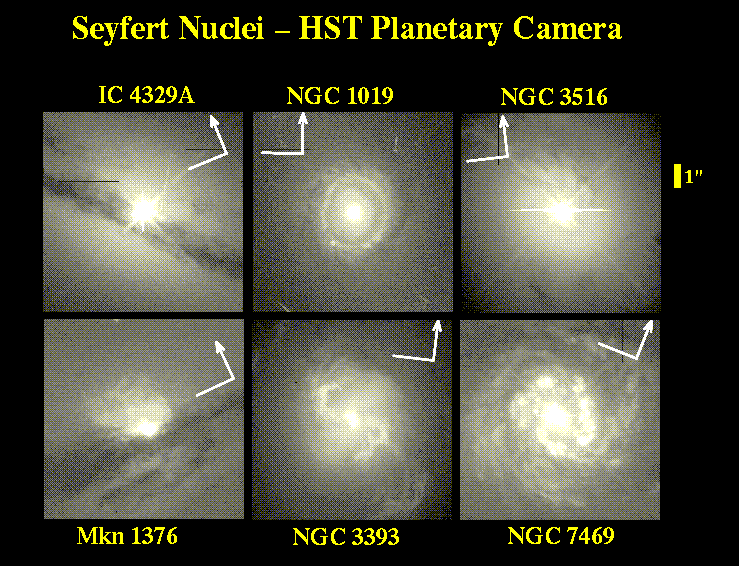
Seyfert galaxies were originally noted as having unusually bright, compact (starlike) nuclei. The surroundings of this brilliant nucleus can take a variety of forms, perhaps carrying clues to how the central engine is fed or triggered. Some of these are shown in this selection of closeups taken with the high-resolution Planetary Camera (PC) CCD on HST's Wide Field Planetary Camera 2. Some of these nuclei are surrounded by either tight rings or annuli of star formation (NGC 1019, NGC 7469), and others show intricate dust structures around the nucleus that are not apparent from ground-based images (NGC 3516). The spiral pattern around the nucleus of NGC 3393 comes from ionized gas, rather than stars, and is excited to shine upon absorption of the intense ultraviolet light from the nucleus. Markarian 1376 shows a cone of gas similarly illuminated by the nucleus; any counterpart on the other side is hidden by the prominent absorbing dust in the galaxy. The closeup of IC 4329A shows that we see its nucleus just through the edge of dust farther out in its disk. In many of these, the nuclei are strongly overexposed to show the surrounding galaxy, producing diagonal diffraction spikes and other image artifacts.
These images are from the inner part of the high-resolution Planetary Camera CCD in the WFPC2 on HST, covering regions 9.1 arcsecond square. The data are from Matt Malkan's "snapshot" program, which delivered short red-light exposures of numerous active galactic nuclei. The arrow indicates the direction of north. A logarithmic intensity scale was used to show the fainter surrounding structure; the nuclei themselves are so bright that they saturated even these short exposures, and in some cases charge bleeding produces linear artifacts from the nuclei. The data are described by Malkan, Gorjian, and Tam in Astrophysical Journal Supplement, 1998.